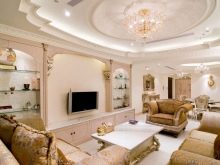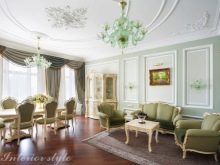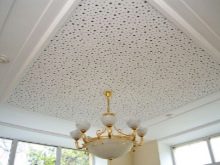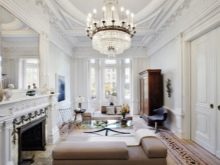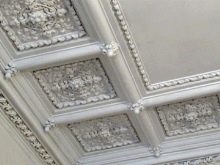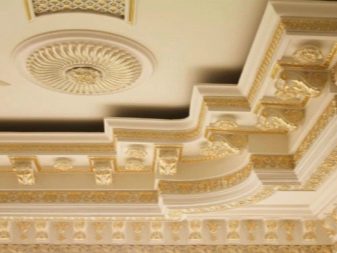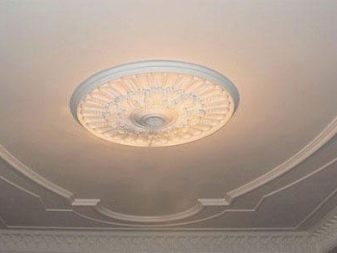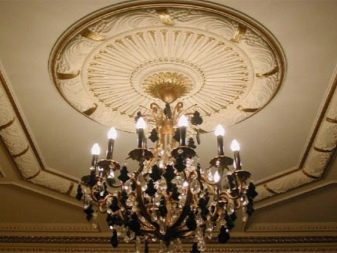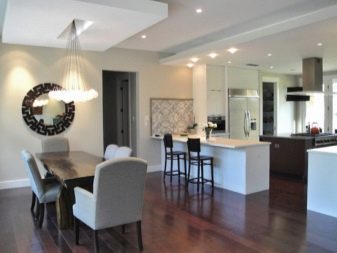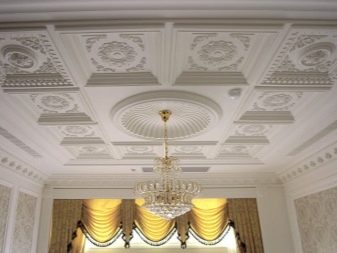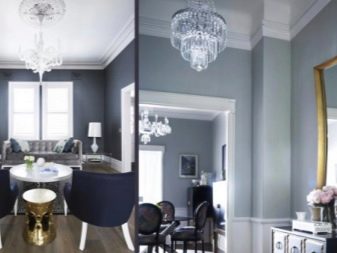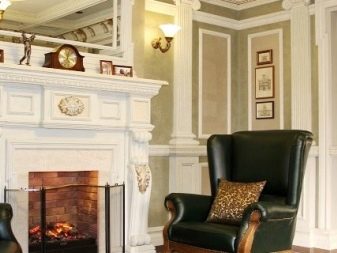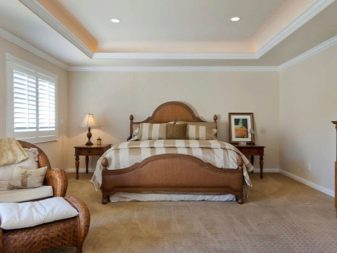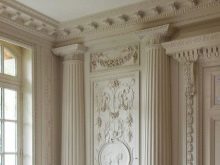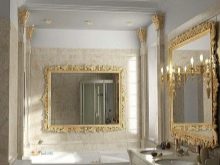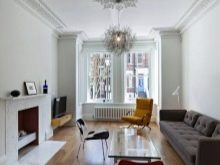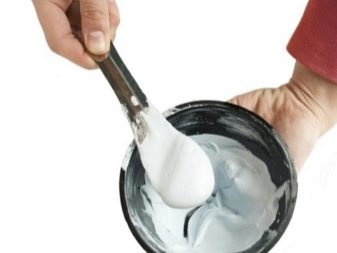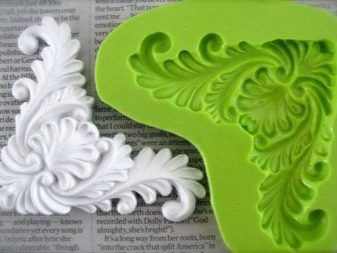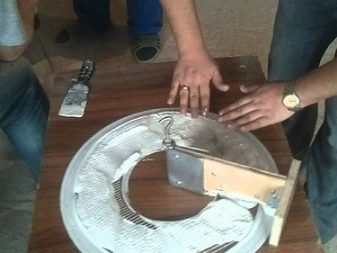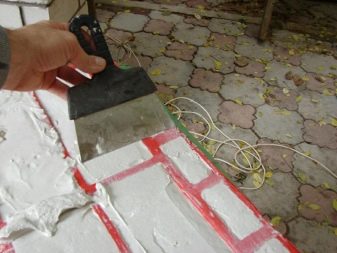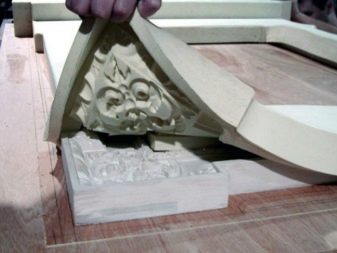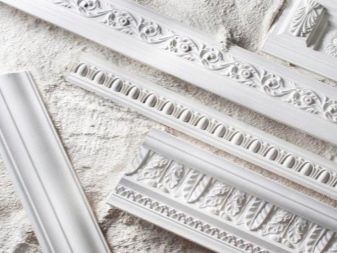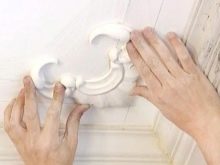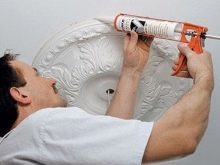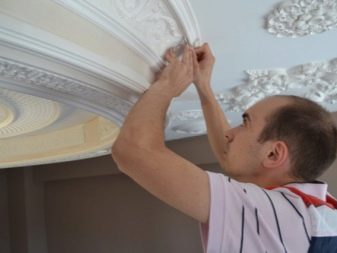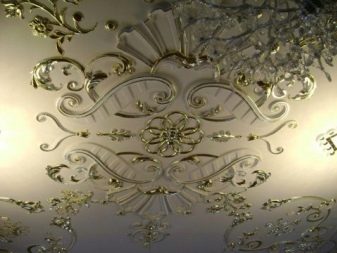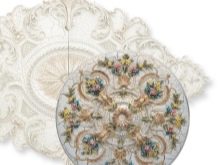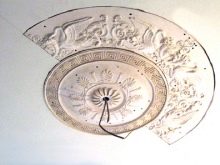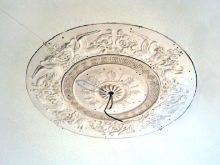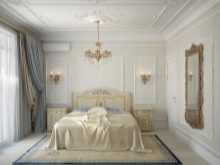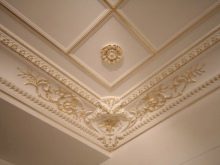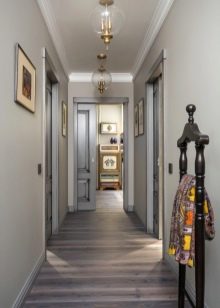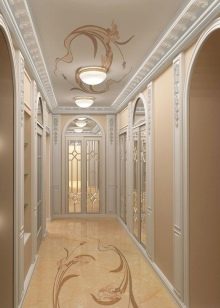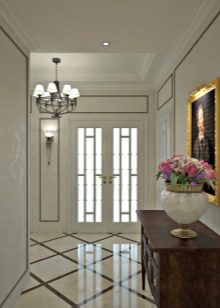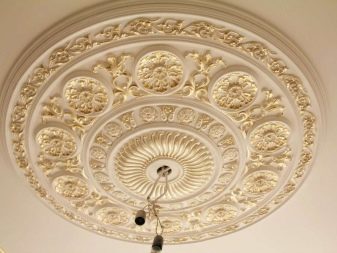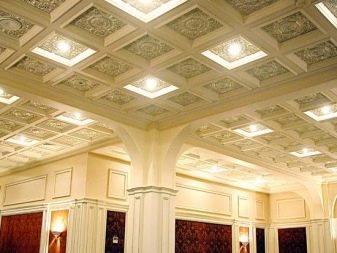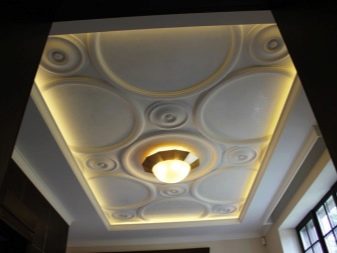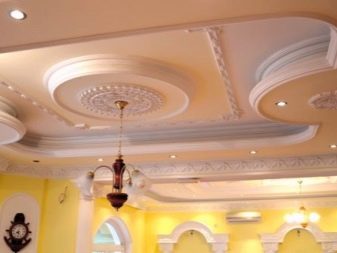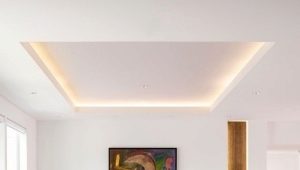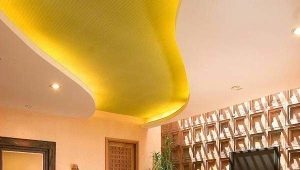Gypsum ceilings: design features and beautiful examples
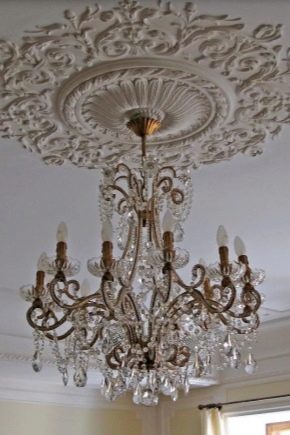
For decorating the premises, gypsum materials (GVL and GKL) have been used for a very long time. Moldings are made of plaster for ceiling surfaces, various bas-reliefs, wall decorations. Today, even make ceilings completely made of plaster.
Special features
Gypsum ceilings consist of a frame and slabs. The frame is created by using glass fiber materials. The reliability of future finishes is directly dependent on this suspension system. Gypsum materials are lightweight and standard. When creating products that are of the first type, manufacturers use the latest technology. They process the material by placing it in special chambers and add unique components.
Depending on the texture, gypsum boards are divided into 3 types. They can be:
- perforated;
- smooth;
- relief.
Perforated products are usually chosen when it is necessary to ensure good sound insulation in the room. Embossed surfaces are ideal if you want to create the atmosphere of a palace, achieve a visual sensation of luxury, get an unusual shape.
Advantages and disadvantages
In antiquity, gypsum was used for a wide variety of premises: from burial chambers to palaces. Today, such material is still very popular in the creation of suspended ceilings, After all, he has many advantages.
- Environmentally friendly gypsum ceiling. Such material is natural, it is completely neutral in relation to the human body. The rooms with gypsum ceilings have a very pleasant atmosphere.
- The ability of such materials to reflect light. Such coatings reflect most of the light that falls on them. For this reason, it is possible not to make plaster ceilings with lighting. Additional light sources do not need to be provided even in dark rooms, whose windows face north. =
- Thermal insulation quality. Gypsum ceilings can keep the rooms warm very well, so with such materials you can save a lot in the winter.
- The ability to provide sound insulation in rooms. Such advantage is perforated materials.
- Resistant to water. Especially expensive products are able to withstand even direct contact with the liquid.
- Fireproof. Such material does not sustain combustion even when exposed to open flame.
- Liquid gypsum can quickly become hard. With this material, you can create a variety of decorative elements: beautiful arches, details of fireplaces, various partitions, decorations, sockets, bas-reliefs, columns, baguettes, and so on.
- Ease of installation. Before installation, it is not necessary to additionally process the ceiling surface, which greatly simplifies the installation of gypsum materials. Given all the important rules, you can complete the installation in a few hours.
- Color performance. Almost all gypsum materials are white. Some decorative elements can be painted.
Minus gypsum panels - this is a significant weight. At the present time, manufacturers have figured out how to make such plates lighter (thanks to a specific method of drying), but in general, the gypsum is still quite heavy.
Species
Ceiling gypsum coatings differ in structural features. The following types of gypsum ceilings are found:
- complex ceilings are recommended to choose only for spacious rooms;
- simple structures can consist of several tiers (for example, two-level ceilings are popular), but the number of levels is no more than three;
- Single-level versions suitable for small rooms.
- multi-level models are suitable for rooms with a ceiling height of at least three meters. To improve visualization, all subsequent levels should be made smaller.
Manufacturing
All gypsum products that are mounted on walls or ceiling coverings are created using silicone molds. To prevent these forms from deforming, when casting, they are usually placed in a casing or box.
First pour the liquid into the mold, then pour it into a container for plaster.So you determine the amount of material that is needed for one plate. Pour the liquid into the container, then add the plaster and mix everything thoroughly. The solution should be quite liquid. Then wait a few minutes, mix it all over again and put the plaster material in the mold.
Pour plaster should not be to the top of the form, leave some space. Align the material with your fingers, make sure there are no air bubbles.
To avoid them, slightly raise the shape, holding onto the edges, and then it will need to be sharply lowered: first one side, then the other. You will see bubbles appear on the surface.
If the gypsum material blurs the shape around the edges, remove it using a trowel. Then you will need to proceed to the reinforcement. Use for this wire from copper or aluminum, sanitary tow, hemp. Rebar should be placed on the filled surface. Then smooth it with a spatula. Pre-mix the remaining material, pour it. After a while, the plaster will start to set.
How is everything going?
Grasping, plaster material becomes warmer,and when it is already quite solid, the stove begins to cool. It usually takes from ten to fifteen minutes - time depends on the thickness of the plate. When it comes time to remove the product, turn the box and shape upside down. The box will need to be removed. Starting from the center, gradually remove the silicone mold from the plasterboard.
Since the stove had not yet become completely dry, it would be necessary to transfer it to a dry room and place it on a flat surface. So you will avoid deformation. However, in some cases, the plate is used immediately after removal from the mold. Gypsum product can dry from 3 to 5 days: it all depends on the microclimate in the room and the size of the plate.
In the event that you waited too long, as a result of which the plaster began to set in the tank, where it was made, it is better not to use the material obtained. Otherwise, you will have to wait too long for the product to solidify in the form, besides, the plate will turn out crumbly, brittle.
Installation of stucco
There are various options for the use of gypsum materials, but one of the most popular methods is the installation of stucco. Going to mount stucco, you will need to prepare the ceiling surface. Make the ceiling as flat as possible, put putty on it.Then you will need to mark the pattern with which you are going to decorate the surface.
It should be the most carefully select the form to create those or other gypsum boards: it will largely depend on how successful the design of the ceiling.
A popular way to install stucco moldings on a ceiling surface is to install them immediately after being removed from the mold. Gypsum product does not have time to become completely dry. If it was necessary to create a lot of plates, and most of them had time to dry, moisten the dry products with water (in a bath or bowl) before carrying out the installation work.
Stucco can be attached to the ceiling surface on a putty or glue, the base of which is water (suitable options - "Mounting", PVA). Each specialist chooses the option that is most convenient for him personally. If the stucco has a significant weight, you can additionally insure and use self-tapping screws.
Seal the gaps between the tiles with a putty. Usually putty squeezed into the joints using a syringe. Then the material will need to be smoothed with a finger.When the stucco on the ceiling is dry, apply water-based paintwork material to it. You can paint the surface in bronze.
On the frame
In some cases, gypsum tile materials are installed on the frame. It is made of wooden planks. Tile materials should be screwed using screws. When the installation work is completed, using a syringe, apply a putty to the places with screws and joints. For such a ceiling coating can also be used water-based paint.
In various rooms
If you are going to stop the choice on plaster ceilings, you should choose the types and forms of material that will be optimal in a particular situation. The ceiling should correspond to the features of the room, fit well into the overall design.
Since perforated plaster is capable of providing sound insulation in rooms, this material is well suited for offices, bedrooms, children's rooms. These products are very different, which allows you to easily choose the best option for a particular design. In addition to standard square plates, design, classic versions are available to consumers.In the living room you can use a variety of products.
Having painted the plaster decorative elements with gold paint, you can make the hall look like a rich royal chamber.
Do not use reliefs and ornaments in the design of kitchen facilities. The surfaces in the kitchens very quickly become dirty: dust, soot and grease will settle in the moldings in the shortest possible time.
It will not be easy to remove such pollution, and for this reason it is better to opt for ordinary smooth ceilings. The same can be said about the premises where people often gather. This also applies to the corridor.
Interesting options
Gypsum ceilings are often chosen for cultural facilities. With the help of stucco you can select the place where the chandelier will be located.
Gypsum ceiling can be chosen for the bedroom. A good option is simple geometric shapes. Such a design has a calming effect on a person.
Gypsum finish gives the room a luxury.
For how to make plaster moldings for ceilings, see the following video.
